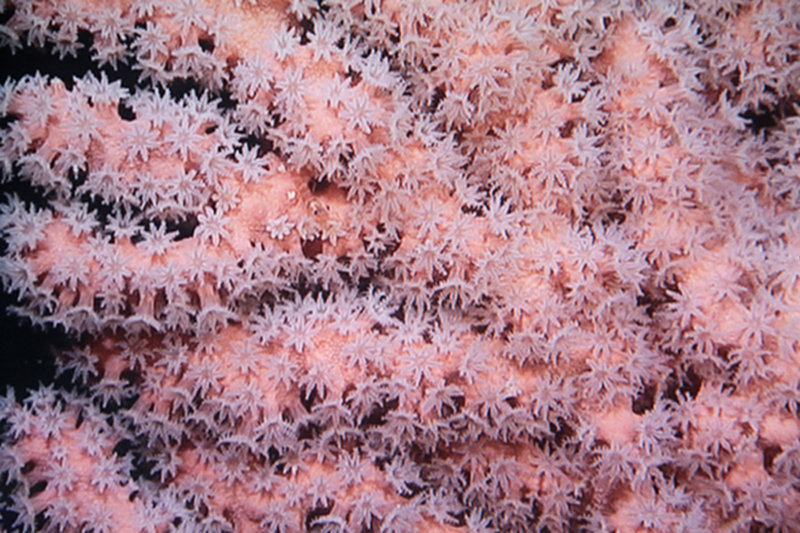
By Christina Kellogg - USGS
September 7, 2012

Closeup view of Paragorgia arborea (bubblegum coral). Image courtesy of Deepwater Canyons 2012 Expedition, NOAA-OER/BOEM. Download image (jpg, 176 KB).
Like people, corals have microbes all over them and inside them. While quite a lot of attention has been paid to the microbial associates of tropical corals, mostly in relation to coral diseases, much less work has been conducted on deep-sea coral species. Considering there are many more deep-sea (aka cold-water) coral species than tropical, a lot of biodiversity is missed by limiting work to sunny, shallow waters!
So far, most microbiology of deep-sea corals has been focused on a stony coral with a global distribution, Lophelia pertusa. However, we have not been seeing stony corals in the canyons; the main corals are octocorals like Paragorgia arborea (bubblegum coral), Primnoa resedaeformis (sea-corn coral) and other soft corals that don’t have common names. Since tropical corals have species-specific microbial communities and so does Lophelia, we have every reason to believe that each octocoral species we find will have its own unique microbial community. From the perspective of a bacterium, each coral colony is a microbial world, with different landscapes and communities.
During this cruise, I have been collecting and preserving coral samples so that after I return to my lab we can identify and characterize the coral-associated microbes. The first goal is to figure out ‘who is there’ and then begin work on the harder question of ‘what are they doing’ as part of the dynamic biology of the coral. We might even discover a few new bacterial species along the way!